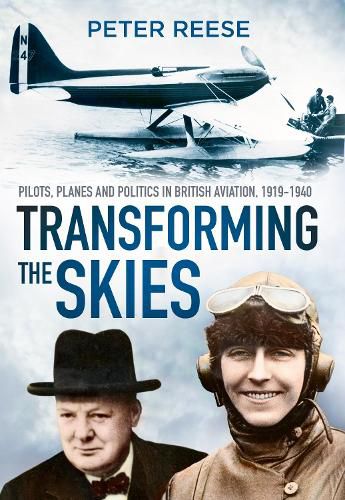Readings Newsletter
Become a Readings Member to make your shopping experience even easier.
Sign in or sign up for free!
You’re not far away from qualifying for FREE standard shipping within Australia
You’ve qualified for FREE standard shipping within Australia
The cart is loading…






The exponential growth of British civil and military aviation between the wars. Following the Armistice of 1918 the British Air Industry, including the newly founded RAF, held a low place in national priorities. The RAF was rapidly run down with the infant airlines being given the least possible help. Such neglect continued during the 1920s. The RAF’s role was questioned and civilian air travel remained the province of the well-heeled few. But the breakdown of the Geneva Disarmament Talks led to renewed interest in the National Air Force and the rise of the European dictators brought calls for rapid modernisation and interceptor aircraft, together with the development of further European civilian air routes. This important study investigates the rapid changes in the interwar period in the realm of aviation, revealing the transformative last-minute preparations for defence in a world where much depended on the contributions of some outstanding individuals. AUTHOR: Peter Reese spent his career in HM Forces, and since then has been a full-time writer with 11 books published, including a Scottish best-seller. His writing has been recommended for a Maritime Media Award and his The Flying Cowboy: The Story of Samuel Cody, Britain’s First Airman (The History Press) continues to attract interest including the possibility of a film. 85 b/w illustrations
$9.00 standard shipping within Australia
FREE standard shipping within Australia for orders over $100.00
Express & International shipping calculated at checkout
The exponential growth of British civil and military aviation between the wars. Following the Armistice of 1918 the British Air Industry, including the newly founded RAF, held a low place in national priorities. The RAF was rapidly run down with the infant airlines being given the least possible help. Such neglect continued during the 1920s. The RAF’s role was questioned and civilian air travel remained the province of the well-heeled few. But the breakdown of the Geneva Disarmament Talks led to renewed interest in the National Air Force and the rise of the European dictators brought calls for rapid modernisation and interceptor aircraft, together with the development of further European civilian air routes. This important study investigates the rapid changes in the interwar period in the realm of aviation, revealing the transformative last-minute preparations for defence in a world where much depended on the contributions of some outstanding individuals. AUTHOR: Peter Reese spent his career in HM Forces, and since then has been a full-time writer with 11 books published, including a Scottish best-seller. His writing has been recommended for a Maritime Media Award and his The Flying Cowboy: The Story of Samuel Cody, Britain’s First Airman (The History Press) continues to attract interest including the possibility of a film. 85 b/w illustrations